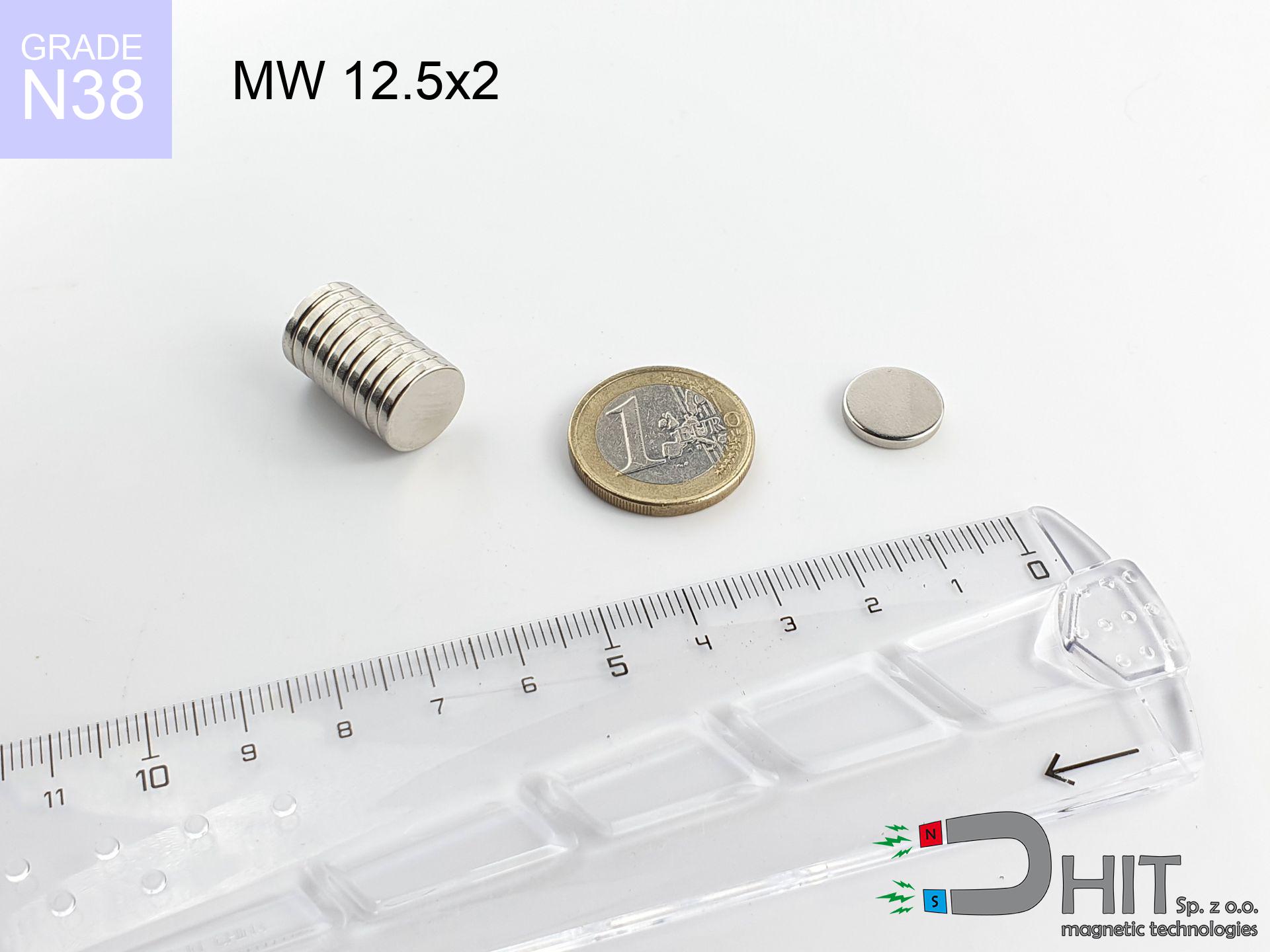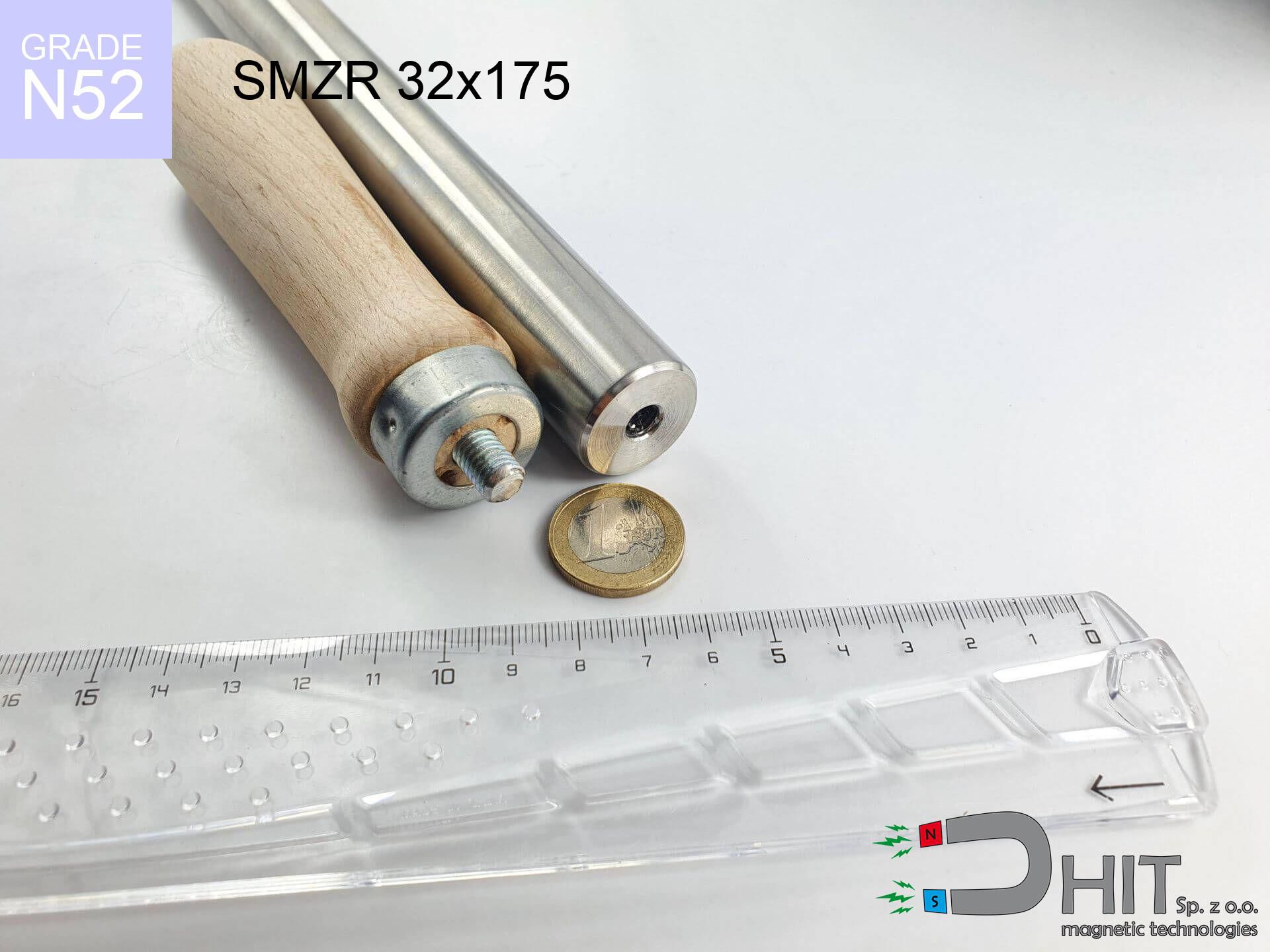CM PML-6 / N45 - magnetic gripper
magnetic gripper
Catalog no 100477
GTIN/EAN: 5906301812630
Weight
17900 g
Magnetization Direction
↑ axial
Load capacity
600.00 kg / 5883.99 N
1422.00 ZŁ with VAT / pcs + price for transport
1156.10 ZŁ net + 23% VAT / pcs
bulk discounts:
Need more?Not sure where to buy?
Call us
+48 22 499 98 98
or drop us a message via
form
through our site.
Strength along with shape of a magnet can be verified with our
our magnetic calculator.
Orders submitted before 14:00 will be dispatched today!
CM PML-6 / N45 - magnetic gripper
Specification / characteristics CM PML-6 / N45 - magnetic gripper
| properties | values |
|---|---|
| Cat. no. | 100477 |
| GTIN/EAN | 5906301812630 |
| Production/Distribution | Dhit sp. z o.o. |
| Country of origin | Poland / China / Germany |
| Customs code | 85059029 |
| Weight | 17900 g |
| Magnetization Direction | ↑ axial |
| Load capacity ~ ? | 600.00 kg / 5883.99 N |
| Manufacturing Tolerance | ±1 mm |
Magnetic properties of material N45
| properties | values | units |
|---|---|---|
| remenance Br [min. - max.] ? | 13.2-13.7 | kGs |
| remenance Br [min. - max.] ? | 1320-1370 | mT |
| coercivity bHc ? | 10.8-12.5 | kOe |
| coercivity bHc ? | 860-995 | kA/m |
| actual internal force iHc | ≥ 12 | kOe |
| actual internal force iHc | ≥ 955 | kA/m |
| energy density [min. - max.] ? | 43-45 | BH max MGOe |
| energy density [min. - max.] ? | 342-358 | BH max KJ/m |
| max. temperature ? | ≤ 80 | °C |
Physical properties of sintered neodymium magnets Nd2Fe14B at 20°C
| properties | values | units |
|---|---|---|
| Vickers hardness | ≥550 | Hv |
| Density | ≥7.4 | g/cm3 |
| Curie Temperature TC | 312 - 380 | °C |
| Curie Temperature TF | 593 - 716 | °F |
| Specific resistance | 150 | μΩ⋅cm |
| Bending strength | 250 | MPa |
| Compressive strength | 1000~1100 | MPa |
| Thermal expansion parallel (∥) to orientation (M) | (3-4) x 10-6 | °C-1 |
| Thermal expansion perpendicular (⊥) to orientation (M) | -(1-3) x 10-6 | °C-1 |
| Young's modulus | 1.7 x 104 | kg/mm² |
Elemental analysis
| iron (Fe) | 64% – 68% |
| neodymium (Nd) | 29% – 32% |
| boron (B) | 1.1% – 1.2% |
| dysprosium (Dy) | 0.5% – 2.0% |
| coating (Ni-Cu-Ni) | < 0.05% |
Ecology and recycling (GPSR)
| recyclability (EoL) | 100% |
| recycled raw materials | ~10% (pre-cons) |
| carbon footprint | low / zredukowany |
| waste code (EWC) | 16 02 16 |
Other deals
Pros and cons of Nd2Fe14B magnets.
Strengths
- They have unchanged lifting capacity, and over nearly ten years their performance decreases symbolically – ~1% (according to theory),
- They show high resistance to demagnetization induced by presence of other magnetic fields,
- A magnet with a metallic gold surface looks better,
- Magnetic induction on the working layer of the magnet remains maximum,
- Due to their durability and thermal resistance, neodymium magnets are capable of operate (depending on the form) even at high temperatures reaching 230°C or more...
- In view of the possibility of flexible molding and customization to unique projects, magnetic components can be created in a broad palette of geometric configurations, which expands the range of possible applications,
- Significant place in high-tech industry – they are commonly used in magnetic memories, motor assemblies, diagnostic systems, as well as multitasking production systems.
- Thanks to their power density, small magnets offer high operating force, with minimal size,
Limitations
- They are prone to damage upon too strong impacts. To avoid cracks, it is worth protecting magnets using a steel holder. Such protection not only shields the magnet but also increases its resistance to damage
- When exposed to high temperature, neodymium magnets experience a drop in power. Often, when the temperature exceeds 80°C, their strength decreases (depending on the size, as well as shape of the magnet). For those who need magnets for extreme conditions, we offer [AH] versions withstanding up to 230°C
- Due to the susceptibility of magnets to corrosion in a humid environment, we suggest using waterproof magnets made of rubber, plastic or other material stable to moisture, in case of application outdoors
- Limited ability of producing nuts in the magnet and complicated shapes - preferred is a housing - magnet mounting.
- Possible danger to health – tiny shards of magnets are risky, if swallowed, which becomes key in the context of child health protection. Furthermore, small elements of these devices are able to be problematic in diagnostics medical when they are in the body.
- Due to expensive raw materials, their price is higher than average,
Holding force characteristics
Best holding force of the magnet in ideal parameters – what affects it?
- on a block made of structural steel, effectively closing the magnetic field
- possessing a massiveness of min. 10 mm to avoid saturation
- with a plane free of scratches
- without the slightest insulating layer between the magnet and steel
- under axial force direction (90-degree angle)
- at conditions approx. 20°C
Determinants of practical lifting force of a magnet
- Distance – the presence of any layer (rust, dirt, air) interrupts the magnetic circuit, which reduces power rapidly (even by 50% at 0.5 mm).
- Pull-off angle – remember that the magnet has greatest strength perpendicularly. Under shear forces, the holding force drops significantly, often to levels of 20-30% of the maximum value.
- Wall thickness – thin material does not allow full use of the magnet. Magnetic flux penetrates through instead of converting into lifting capacity.
- Material composition – not every steel attracts identically. Alloy additives worsen the attraction effect.
- Smoothness – full contact is obtained only on polished steel. Any scratches and bumps create air cushions, weakening the magnet.
- Temperature – heating the magnet results in weakening of force. It is worth remembering the thermal limit for a given model.
Holding force was measured on the plate surface of 20 mm thickness, when a perpendicular force was applied, in contrast under parallel forces the holding force is lower. Moreover, even a small distance between the magnet’s surface and the plate lowers the holding force.
Fragile material
Protect your eyes. Magnets can fracture upon uncontrolled impact, launching shards into the air. Wear goggles.
Phone sensors
GPS units and mobile phones are extremely susceptible to magnetism. Close proximity with a powerful NdFeB magnet can decalibrate the sensors in your phone.
Crushing risk
Big blocks can crush fingers in a fraction of a second. Under no circumstances place your hand between two attracting surfaces.
Keep away from children
Strictly keep magnets away from children. Risk of swallowing is significant, and the consequences of magnets clamping inside the body are fatal.
Medical interference
Life threat: Neodymium magnets can turn off pacemakers and defibrillators. Do not approach if you have medical devices.
Electronic hazard
Data protection: Neodymium magnets can ruin data carriers and sensitive devices (pacemakers, medical aids, timepieces).
Safe operation
Be careful. Rare earth magnets act from a distance and snap with huge force, often faster than you can react.
Power loss in heat
Regular neodymium magnets (grade N) lose magnetization when the temperature exceeds 80°C. Damage is permanent.
Metal Allergy
Nickel alert: The Ni-Cu-Ni coating consists of nickel. If an allergic reaction happens, cease handling magnets and use protective gear.
Flammability
Machining of neodymium magnets carries a risk of fire hazard. Neodymium dust reacts violently with oxygen and is hard to extinguish.




![UMGGZ 88x8.5 [M8] GZ / N38 - rubber magnetic holder external thread UMGGZ 88x8.5 [M8] GZ / N38 - rubber magnetic holder external thread](https://cdn3.dhit.pl/graphics/products/umg-88x8.5-m8-gz-waf.jpg)



